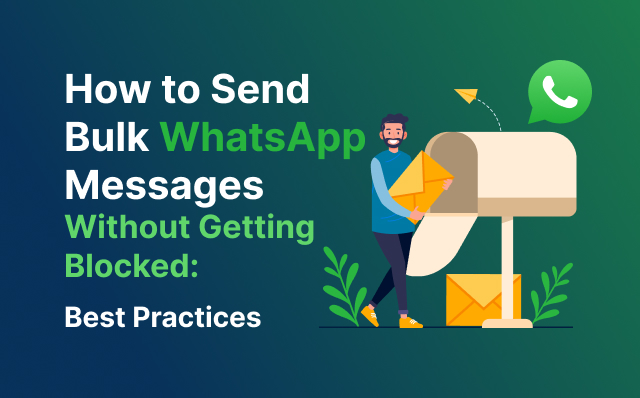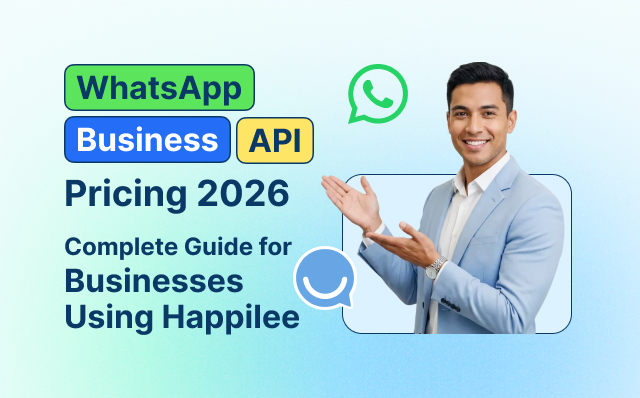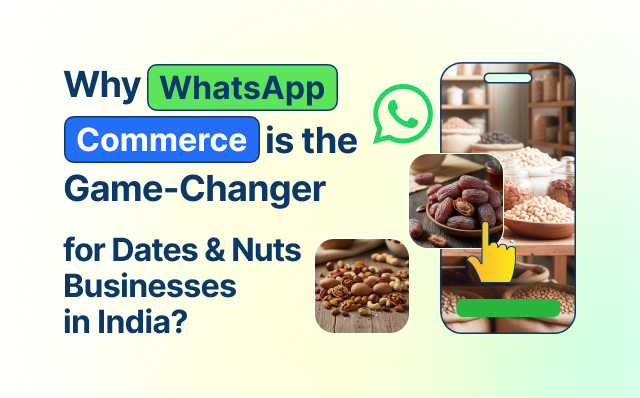In the dynamic world of digital communication, WhatsApp stands out as a crucial tool for businesses aiming to engage with their audience. However, when it comes to how to send bulk WhatsApp messages, many businesses face the challenge of avoiding blocks and ensuring their messages reach their intended recipients. This comprehensive guide will walk you through the best practices for how to send bulk WhatsApp messages without getting blocked, ensuring you maximize your communication efforts while staying compliant with WhatsApp’s policies.
Why Bulk Messaging on WhatsApp?
Before diving into the strategies for how to send bulk WhatsApp messages, let’s explore why WhatsApp is an essential platform for bulk communication:
- Wide Reach: WhatsApp boasts over 2 billion active users worldwide, making it a powerful tool for reaching a broad audience.
- High Engagement Rates: WhatsApp messages typically have higher open and response rates compared to other messaging platforms.
- Personal Touch: Messaging on WhatsApp offers a more personalized communication channel, enhancing customer interactions.
Understanding WhatsApp’s Policies on Bulk Messaging
WhatsApp has strict policies regarding how to send bulk WhatsApp messages to prevent spam and ensure a positive user experience. Violating these policies can lead to temporary or permanent blocks. Here’s a brief overview of WhatsApp’s bulk messaging policies:
- No Spam: WhatsApp does not permit unsolicited bulk messages. Users must opt-in to receive communications.
- Message Content: Messages should be relevant and valuable to the recipients. Avoid sending promotional content that could be deemed spammy.
- Compliance: Ensure your messaging practices comply with WhatsApp’s Business and Commerce Policies.
Best Practices for How to Send Bulk WhatsApp Messages
To effectively send bulk WhatsApp messages while avoiding blocks, follow these best practices:
1. Use WhatsApp Business API
For businesses looking to understand how to send bulk WhatsApp messages, the WhatsApp Business API is the recommended solution. Unlike the regular WhatsApp Business app, the API allows for high-volume messaging and provides advanced features for managing communications.
Benefits of WhatsApp Business API:
- Higher Message Limits: Send messages to a larger audience compared to the standard app.
- Automation: Automate responses and manage interactions efficiently.
- Integration: Integrate with CRM systems and other tools for a seamless communication process.
2. Obtain User Consent
Always ensure that recipients have opted in to receive messages from you. This is crucial for compliance with WhatsApp’s policies and for maintaining a positive relationship with your audience.
How to Obtain Consent:
- Subscription Forms: Use web forms or landing pages where users can sign up to receive messages.
- In-App Prompts: Include opt-in prompts within your app or website.
- Clear Communication: Inform users about the types of messages they will receive and how often.
3. Personalize Your Messages
Personalized messages have higher engagement rates and are less likely to be flagged as spam. Tailor your messages based on recipient preferences and past interactions.
Personalization Tips:
- Use Recipient Names: Address recipients by their first name.
- Segment Your Audience: Group recipients based on demographics, interests, or behavior.
- Relevant Content: Ensure the message content is relevant to the recipient’s interests or needs.
4. Avoid Message Overload
Sending too many messages in a short period can trigger spam filters and lead to blocks. Instead, space out your messages and avoid overwhelming recipients.
Managing Message Frequency:
- Set Limits: Establish a reasonable number of messages to send per day.
- Monitor Engagement: Track response rates and adjust messaging frequency based on engagement metrics.
- Use Scheduling Tools: Utilize tools that allow you to schedule messages and manage timing.
5. Monitor and Manage Responses
Active monitoring of responses helps in managing interactions effectively and addressing any issues promptly. It also helps in maintaining a positive sender reputation.
Response Management:
- Automated Replies: Set up automated responses for common queries.
- Monitor Feedback: Keep track of recipient feedback and adjust messaging strategies accordingly.
- Customer Support: Provide clear channels for recipients to contact you if they have concerns or wish to opt-out.
6. Utilize WhatsApp Templates
WhatsApp Business API allows the use of message templates for sending bulk messages. Templates must be approved by WhatsApp and are useful for sending structured messages, such as notifications and updates.
Creating Effective Templates:
- Follow Guidelines: Ensure templates comply with WhatsApp’s guidelines for content and format.
- Be Clear and Concise: Craft templates that are clear, concise, and relevant to the recipient.
- Test Templates: Test templates before sending them in bulk to ensure they display correctly.
7. Maintain Data Privacy
Protecting recipient data is essential for maintaining trust and compliance with regulations such as GDPR. Ensure that data handling practices align with privacy laws.
Data Privacy Practices:
- Secure Storage: Store recipient data securely and use encryption where possible.
- Transparent Policies: Clearly communicate your data privacy policies to recipients.
- Data Access: Restrict access to recipient data to authorized personnel only.
8. Regularly Review and Update Your Strategy
Continuously reviewing and updating your bulk messaging strategy helps in adapting to changes in WhatsApp’s policies and improving your communication effectiveness.
Review Tips:
- Analyze Metrics: Regularly analyze metrics such as open rates, click-through rates, and response rates.
- Stay Updated: Keep up with any changes in WhatsApp’s policies and guidelines.
- Solicit Feedback: Gather feedback from recipients to improve your messaging approach.
Conclusion: Enhancing Communication with Happilee’s WhatsApp Business API
Understanding how to send bulk WhatsApp messages effectively requires adherence to best practices and an understanding of WhatsApp’s policies. By using the WhatsApp Business API, obtaining user consent, personalizing messages, and managing responses, businesses can maximize their communication efforts while minimizing the risk of blocks.
For those looking to elevate their WhatsApp communication strategy, Happilee’s WhatsApp Business API offers a robust solution. With advanced features for automation, integration, and message management, Happilee’s API can help your business achieve seamless and effective bulk messaging. Enhance your customer engagement and streamline your communication process with Happilee’s powerful tools.
FAQs
1. How can I avoid getting blocked when sending bulk WhatsApp messages?
To avoid getting blocked, use the WhatsApp Business API, obtain user consent, personalize your messages, and avoid sending too many messages too quickly.
2. What is the WhatsApp Business API?
The WhatsApp Business API allows businesses to send high volumes of messages and integrate with other systems for efficient communication management.
3. How can I obtain consent from recipients?
Obtain consent through subscription forms, in-app prompts, and clear communication about the types of messages they will receive.
4. What are WhatsApp message templates?
WhatsApp message templates are pre-approved message formats used for structured communication, such as notifications and updates.
5. How can Happilee’s WhatsApp Business API help my business?
Happilee’s API provides advanced features for automation, integration, and message management, enhancing your bulk messaging and customer engagement efforts.


